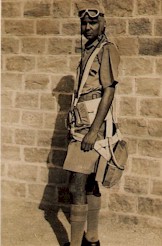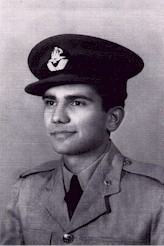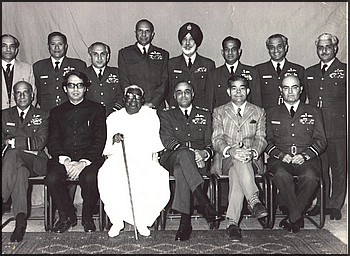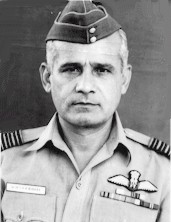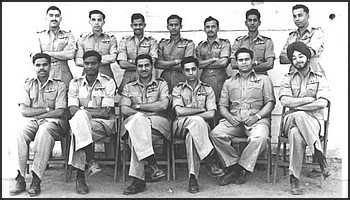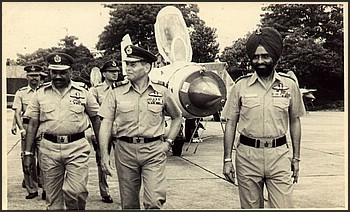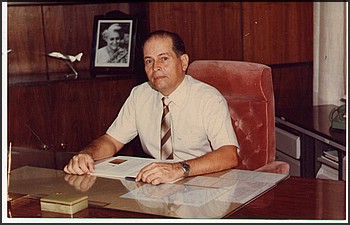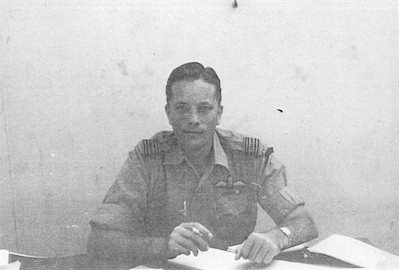The Origin of the Anglo-Indians
The Portuguese came to India just over 500 years ago. The Dutch, French and the British soon followed, attracted by the famed riches of India. Starting with the first visitors themselves (the Portuguese), Europeans married local people. These unions resulted in the birth of a new community of Eurasians - which later came to be known as Anglo-Indians. But it was only recognized as a separate community much later. In 1911, when Charles Hardinge was Viceroy of India, he officially recognized the use of the nomenclature Anglo-Indian in describing members of the community. The term Eurasians soon dropped out of usage. The numbers of Anglo-Indians grew as more and more Europeans arrived in India. Thus the history of the community is about 500 years old
Anglo-Indians – Neither European nor Indian
Anthropologist Lionel Caplan in a learned paper suggested that the globalising process commonly referred to as colonialism produced transnational communities from its very inception. The people he specifically examined – “Eurasians or Anglo-Indians as they later came to be called - belong to that category of 'hybrid' groups which resulted from 'colonial desire' - the sexual liaisons, formal and informal, between European colonial males and native females, encouraged, among other things, by the official restriction of access to the colonies by European women. Such intermediate communities were variously seen as bulwarks of colonial elites, or as lurking threats to their power. In consequence, they were subject to a frequently shifting set of criteria that allowed them privilege at certain historical moments and pointedly excluded them at others. Nonetheless, while many of these populations were deliberately removed from positions of influence in the course of the colonial period, they continued to stress their paternal (European) ancestry alongside the denial or downgrading of maternal (local) links, and to insist on their close biological, social and cultural ties with the colonial rulers” This analysis clearly indicates that Anglo-Indians did not consider themselves as Indians, in the early years of the community. Home to them meant Britain or the European country of their fathers even though they were born in India and many of them had never been abroad.
Anglo-Indians in Military Service
Perhaps the most prominent Anglo-Indian to help establish the British Raj in India was the legendary James Skinner. He was born in 1775, the son of a Scotsman and a Rajput woman. He was also known as Sikander Sahib. He raised a freelance force, which fought on behalf of many Indian ruling princes. His men were known as the "yellow boys", since they used to wear yellow shawls in battle. Skinner’s irregular cavalry was called "Skinners' Horse". It became the finest regiment of the Honourable East India Company (which usually acted very dishonourably). Skinner’s Horse later became a part of independent India’s Army. In 1978 the Indian Government issued a postage stamp to celebrate 175 years of the Skinners' Horse Regiment. Similarly, the Gardner's Horse, founded by Colonel William Linnaeus Gardner, is also one of India's proud regiments today.
During our First War of Independence of 1857 (the British termed it the Sepoy Mutiny), Anglo-Indians manned essential services like Post and Telegraph, the Railways and Customs, etc. They served loyally and with distinction. Interestingly, there was a period in the history of the East India Company when due to distrust Anglo-Indians were not accepted for commissioning in its army. This bias showed up again when the Indian Air Force (IAF) was conceived.
In World War I around 8,000 Anglo-Indians fought for the British along with Indian colleagues in some of the bloodiest theatres such as Mesopotamia, East Africa and Europe. After WW I ended, Indians wanted a greater part in managing their own forces. In deference to these wishes, the “Indian Sandhurst Committee” (also referred to as “The Skeen Committee”) was formed in 1925. It was chaired by Sir Andrew Skeen (the British Chief of General Staff) with some Indians also as members of it. The Committee noted that the Indian Army and Navy had British officers serving in them. It recommended the raising of an Indian Air Force. Departing from old practice, the Skeen Committee stipulated that only Indians should man the IAF. However, British personnel could be seconded to it but not serve as IAF officers or men. It also recommended that a few Indians be trained at the Royal Air Force College at Cranwell. The implementation of the Committee’s suggestions took rather a long time. Eventually in 1930 six Indians went to Cranwell and five of them graduated from it as pilots. The sixth failed, as he was too short. The Indian Air Force came into being on 8 October 1932. The first unit of the IAF, No. 1 Squadron, was formed on 1 April 1933 at Drigh Road Airfield, Karachi. There was not a single Anglo-Indian among them even when World War II broke out in 1939. But many members of the community were very keen to fight for the Allies.
Enter Sir Henry Gidney
Henry Albert John Gidney was born on July 9, 1873 at Igatpuri, Maharashtra. He had a brilliant career. He was educated at Bangalore, Calcutta, and Allahabad and was an excellent student. At age 16 he joined the Calcutta Medical College, graduating First Class as a Gold Medal Winner. At 37 years he was already an FRCS, DPH, MRCP, D.O., a research scholar and Lecturer in Ophthalmology at Oxford, and a Fellow of the Royal Society. He joined the Indian Army Medical Service and saw active service in China during the Boxer Rebellion and was recognised for his bravery in 1901. He became a Lieutenant Colonel during World War I before setting up his own private practice.
Apart from running the railways and postal services etc, Anglo-Indians had done excellent work in the field of education. The many English medium schools and convents in India owe their very existence to the community. And English has become the only language understood all over India. But Gidney was concerned with racial discrimination against Anglo-Indians practiced by the British Raj. He himself was a victim of it. Henry Gidney carried out an unrelenting struggle for his community, soon emerging as its leader and President of the Anglo-Indian & Domiciled European Association. He was nominated a member of the Central Legislative Assembly (the fore-runner of modern India's Parliament) in 1921. His main concern was for bettering the lot of Anglo-Indians and bringing unity within the community. His forceful representations before the Simon Commission (1928-29) and the three Round Table Conferences (1930-32) resulted in Anglo Indians having increased political representation, educational safeguards and job reservations. He vigorously urged Anglo-Indians to think of themselves as Indians or else be stranded with no clear national identity. His efforts led to Anglo-Indians being allowed into IAF.
He was knighted in 1931. Sir Henry Gidney was a flamboyant and charming politician, the ace raconteur in the Legislature and in Delhi's society circles. At a meeting of the Legislative Assembly he spoke immediately after Mohammed Ali Jiinnah. He said, “The Honourable Member who has just spoken has not only got the bull by the horns, but also the cow by the udders”. As one of the community's greatest leaders he placed Anglo-Indians on the political map of India and united the Branch Associations. Sir Henry passed away in New Delhi on May 5,1942.
Anglo-Indians join IAF
The Indian Air Force did excellent work during World War II to help halt the Japanese advance into India from Burma. Many people got Distinguish Flying Crosses (DFCs). However, in this list not a single Anglo-Indian name can be found. Perhaps the British distrust of the Anglo-Indians prevented their contribution being given due recognition. The first Anglo-Indian to join IAF was MB (Maurice) Barker (1920-1989). Since he had already qualified as a pilot in the Bombay Flying Club, he was immediately commissioned as Pilot Officer, 1691 GD (P), on March 11, 1941. His IAF training soon followed. John Dunbar Aquino was next, after a few months. Many Anglo-Indians followed. Almost without exception they proved to be courageous, strong-willed, able pilots and exceptional leaders.
After WW II, it was obvious that India would gain its independence soon. But on their departure the British left Anglo-Indians in the lurch. On the death of Sir Henry Gidney, Frank Anthony carried his work forward. Due to his efforts, Anglo-Indians were specifically mentioned in the Indian Constitution – the only minority community to be explicitly defined in the hallowed document. Its Article 366 says, " An Anglo-Indian means a person whose father or any of whose male progenitors in the male line is or was of European descent but who is domiciled within the territory of India and is or was born within such territory of parents habitually resident there-in and not established there for temporary purposes only". This gave them full rights as citizens of India. But at the same time some job reservations won for the community after a protracted struggle were taken away by Article 16(4). Existing reservations for Anglo-Indians in the railways, customs and Post & Telegraph departments were an eyesore to politicians, because of the high visibility of Anglo-Indians. Especially in the railways, the community had been segregated, by deliberate policy of the military back-room boys in the British administration, in "European" enclaves. They were compelled to act as a militia in times of insurrection. Fortunately IAF had no such problems.
Trail Blazers & Great Leaders
Pilot Officer Maurice Barker steadily rose in the service. Perhaps his greatest contribution to IAF came with the 1971 Bangladesh War. Air Vice Marshal (AVM) Barker was then Air Officer Commanding-in-Chief, Central Air Command (CAC) located at Allahabad. Transport and bomber aircraft under his command assisted with great efficiency the Army in Bangladesh, especially with bombing at night.
The Command helped the Navy both in the Bay of Bengal and the Arabian Sea. He was awarded the Param Vishisht Seva Medal (PVSM) for his exceptional management of the CAC’s resources and utilising them to the fullest extent. Air Marshal Maurice Barker was AOC-in-C Eastern Air Command (EAC) and finally, prior to retirement, AOC-in-C Training Command, its headquarters in his hometown - Bangalore. Thus Maurice Barker was not only the first Anglo-Indian to join IAF but also the community’s first Air Marshal. At last count at least seven others followed him to reach the rank of Air Marshal. In the order of the date of commissioning, they were DG (Dougie) King-Lee, MSD (Mally) Wollen, DA (Dennis) La Fontaine (later Air Chief Marshal, CAS), JW (Johnny) Greene, DJ (Denzil) Keelor, KDK (Keith) Lewis, Sherwin Tully and Mike McMahon (still in service). While these Anglo-Indians reached the peaks of the IAF seniority pyramid, there were countless others who made very significant contributions to IAF.
|
The IAF Commanders' Conference was in April 1973. Seen in the seated row are AM HC Dewan, ACM OP Mehra and AM H Moolgavkar. AM Maurice Barker, AM AR Pandit , AM IH Latif can be seen standing in the rear row. |
JJ (Pop) Bouche apparently had trouble learning flying in Canada. Perhaps due to racial discrimination, the instructors declared that he and many other Indians could not fly. He qualified as a pilot only on his return to India. Many pilots for IAF actually became Sergeant Pilots in RAF. But they all got their commissions in IAF with seniority from the date of becoming Sergeant Pilots. Eventually Pop Bouche became an exceptional pilot. He was in the first Spitfire Squadron of IAF and was mentioned in despatches during Kashmir operations. He was in the first group of pilots to convert to Hunters. He was one of only two IAF pilots to complete full training as engineers at Air Force Technical College, Jalahalli. He was the only non-test pilot to command the Aircraft & Armament testing Unit. Later he became the first inspector of IAF’s maintenance practices and procedures. Retired as an AVM, he now lives in Australia. His younger brother David Bouche commanded the first night-fighter squadron of IAF and later the Aircrew Examining Board. Air Cmde DE Bouche now lives in England.
Gallant Heroes
Perhaps the first Anglo-Indians to be decorated with Vir Chakra (VrC) were Flt Lt MPO (Mickey) Blake and Fg Offr GD (Nobby) Clarke flying Tempest IIA aircraft in the Kashmir War. Eight other Anglo-Indians were also awarded the VrC. Mickey Blake was always cheerful – angry for about two minutes only if greatly provoked. In the Kashmir War he was once flying a Harvard with SR (Jackie) Pawar as the other pilot. They spotted a Pak tank on the riverbank in Pak territory. Mickey Blake decided to take it on with the Harvard’s puny little gun. It did no harm to the tank, which fired back and hit the aircraft’s canopy. The shattered plastic damaged Jackie’s helmet, injured him and made him deaf. Fortunately the doctors were able to do the required repairs. But more than half a century later he still carries some plastic pieces in his neck. Later in 1948 Mickey Blake joined the Aircraft Testing Unit (ATU) for clearing and inducting into service the Vampires, IAF’s first jet fighters. Led by Wg Cdr H Moolgavkar, ATU went around showing off the Vampires all over the country. A Harvard aircraft used to accompany the team. The rear seat of the aircraft was often meant for Mickey’s bull terrier named Sandy. Sandy was a very good guard of the Vampires. He only allowed uniformed personnel to approach aircraft. Nobby also joined the team a little later. Mickey Blake commanded No. 7 Squadron with Nobby as his Flight Commander. He was such a loved and respected leader that all squadron pilots were ready to lay down their lives at his command – not that it ever became necessary. Both Mickey Blake and Nobby Clarke became Group Captains and took premature retirement to immigrate to Australia.
Sidney Basil Noronha received the Maha Vir Chakra (MVC) for his gallantry in the Kashmir War. Eight other Anglo-Indians earned VrCs in that war. Among them was Desmond Pushong who delivered supplies to the army in the area surrounded by Pak’s so called Tribal Raiders. AIK (Sue) Suares was awarded a VrC in 1948 and a Bar to it in 1962 for IAF’s Canberra operations in Congo on behalf of the United Nations. TI (Tom) Anderson got the Ashok Chakra Class III (later renamed Shaurya Chakra) and a VrC for flying Dakotas in hostile and difficult areas.
|
|
Gp Capt WM Goodman 3571 GD(P) was the CO of No.31 Squadron during the 1965 War. His leadership of the unit earned him the Maha Vir Chakra. Read the Citation here. |
Gp Capt William MacDonald (Jim) Goodman whose actual name was James was enrolled in IAF by his father’s name. This error was never rectified. Gentleman Jim passed away earlier this year. He was an exceptional man. He had been captain of his school in Bangalore and had won the “victor-ludorum” as a sportsman. He played hockey and cricket (even for IAF) and was a very good boxer. He won the Sword of Honour at commissioning in IAF. Within one year he was sent to the Flying Instructors School in UK. At its end he was asked to ferry a Prentice all by himself to India. There was no briefing on air routes, no radar and no other help. Yet he managed to bring the single engine, poorly equipped aircraft to India without any mishap. In the 1965 War he was the only fighter pilot to earn a Mahavir Chakra (MVC), though Sqn Ldr AB Devayya was also awarded the MVC posthumously.
Mally Wollen became a legend in the IAF even while serving at earlier ranks. As a Flt Lt he took charge of the Gnat Handling Flight to adapt the aircraft for IAF. Its many shortcomings were explored and corrected by suitable modifications with the help of the designers and HAL. Soon after that he became Flight Commander of the first MiG-21 Squadron. In the 1965 War he was once escorting JM (Jaggi) Nath who was photographing the Ichchogil Canal area from a Canberra in daytime. Mally had almost returned to base when Jaggi called for help after seeing some aircraft on his tail. Mally immediately gave up his approach to land and went to his assistance. Fortunately the aircraft chasing Jaggi were our own and they soon disappeared. A Pak Sabre seeing the MiG also scooted. Mally came back to land and his engine cut while taxiing back due to lack of fuel. Mally was the first IAF pilot ever to fire a Ka-13 missile in the war. However, it was found that the missiles just would not lock on to the targets. This was proved after the war in ideal conditions during trials. Kills by MiG-21 aircraft were only due to the gun-pack. Mally was Mentioned in Dispatches during the 1965 War and commended at least three times for meritorious services.
|
The Gnat Handling Flight at A&ATU Kanpur 1958-59. Standing L to R are Flt Lts P Ashoka, Satwant Singh, Sqn Ldr Wollen, Flt Lt VK Singh |
No.7 Squadron in 1953. Flt Lt Wollen seated second from right. Standing: extreme right RA 'Bertie' Weir, next to him JW 'Johnny' Greene; author third from left. |
But perhaps his finest hour came in the 1971 Bangladesh War. His contribution to this war was so outstanding that many people claim that he won the war for India. This achievement deserves a separate story to be covered in a later issue. Suffice it to say that he was awarded PVSM for his exceptional contribution to the success of the war. The CAS, ACM PC Lal announced the award well before any citation was drafted. Mally commanded organisations of the IAF at all levels including two operational commands, the vital Western Air Command being the last. On leaving IAF he became Chairman of HAL. He now leads a retired life in Bangalore.
|
Air Marshal MSD Wollen visiting Tezpur AFS in 1981. Tezpur was commanded by him in the 1971 Ops. Seen with him is Wg Cdr MS Sekhon, VrC SC |
Air Marshal Wollen took over as the Chairman and MD of HAL in 1984. He is currently settled in Bangalore. |
King-Lee spent a long time in the northeast. Commissioned in November 1944, he was with No. 8 Squadron in Burma. He held many important assignments such as AOC J&K, Air Defence Commander (East), Commandant National Defence College and AOC-in-C Eastern Air Command from which post he retired. However, perhaps his most important assignment was in Bangladesh. He was sent there as a defence attaché for one week and stayed in Dhaka for five years! He was witness to the surrender of the Pak forces and had first-hand knowledge of how India won the war. He seems to have almost anticipated the assassination of Sheikh Mujib-ur-Rahman. Apparently he was the sole source of accurate information for India about the newly independent nation. He now lives in Bangalore.
|
|
|
Squadron Leader PM Wilson seen here during his deputation to the Congo. He was awarded the VrC in 1965 and is the only Group Captain along with MSD Wollen to receive the PVSM in the 1971 War. |
PM (Pete) Wilson was a shining example in IAF. He had earned a VrC in 1965. In the 1971 war he was commanding the base at Jamnagar. He managed to fool Pak Canberra aircraft into dropping their bombs on a lit up decoy strip well to the south of the airfield. He was awarded PVSM for his exceptional work during the war. Pete was an excellent leader, still remembered, loved and revered in IAF. He invariably stood by his officers and men. For any mistake by his subordinates his only answer used to be that as the senior most person (or the commander) it was his sole responsibility. Punishment if any was due only to him. Fortunately the IAF never even tried to pull him up.
The Many Decorated Anglo-Indians
Much has already appeared in the press about the Keelor Brothers, both of them were awarded VrC in the 1965 war. So were JW (Johnny) Greene, AL Mousinho, AT Cooke, Hilton Byrne and JL Dweltz. PR (Paddy) Earle earned a VM. During the 1965 War many operational bases of IAF and also many squadrons were under the command of Anglo-Indians. Some of them were decorated by awards, mentioned in despatches or just commended. Their contribution to the war effort was invaluable. This carried on for the Bangladesh war as well. JF Lazaro was decorated with the PVSM for his exceptional services in the 1971 war. Vir Chakras were won by AL (Aubrey) Michael, RA (Bertie) Weir, Lawrence Fredric Periera, AR Da Costa, and AD (Allan) Alley. Rather unusually, DM (Don) Conquest was awarded the VrC and AVSM for the same war. CV (Cecil) Parker received the MVC for his contribution to the war effort.
Several Anglo-Indians also got peacetime gallantry awards of Kirti Chakra and Shaurya Chakra, some of them for the peacekeeping operations in Sri Lanka. Perhaps we should restrict ourselves to remembering a very special one. On February 26, 19 57 Prime Minister Jawahar Lal Nehru and his entourage were travelling in an Illyushin-14 twin piston-engine aircraft (Meghdoot). Sqn Ldr RA (Reggie) Rufus who was the pilot of the aircraft noticed a fire and considerable vibration from one of the aircraft engines. He decided to land at a disused unpaved landing strip at Raichur. A regular airfield was over 80 miles away. By good judgement and flying skill, he made a successful single-engine landing on the strip thus ensuring the safety of the PM and his party. He was rightly awarded the Kirti Chakra for this feat.
Spreading their Good deeds
Anglo-Indian Associations are very active in Australia, Britain, Canada and the USA. Wherever they have gone they have made a positive impression. In a cover article in the Illustrated Weekly of India, Khushwant Singh, without malice, described them as "The Good Australians" As is usual for his writing, this comment may also have had two meanings: Anglo-Indians were like the Aussies, only much better. Or else, the Anglo-Indians who moved to Australia in large numbers were the best citizens of their adopted country. In any case Anglo-Indians made a very significant contribution to the growth and successes of IAF – well beyond their proportional representation in the service. This is clearly shown by the fact that of all the VrCs awarded in the 1948, 1965 and 1971wars with Pakistan, a surprising number of them went to Anglo-Indians. Let us wish them well and hope that they will keep up their good work as brave flyers, managers and leaders in future.
Author’s Note
The author gratefully acknowledges the help in gathering information contained in this article from various web sites managed by Anglo-Indians, other enthusiasts and from Bharat-Rakshak. Errors of fact or omission are entirely his responsibility. Readers who wish to correct, comment on, or add anything to the article may please send an email to Editor Indian Aviation (info@indianaviation.com) or post him a letter. Anglo-Indians and their Associations are at liberty to use this article in part or whole, if so desired. However, the author would appreciate an indication to this effect, also through the Editor. This would ensure that authenticated correct facts would be finally put up on the Internet.
The corrections , comments etc can also be forwarded to webmaster of the IAF Section of Bharat Rakshak. The email is airforce @ bharat-rakshak.com . This article originally appeared in the INDIAN AVIATION Magazine.Copyright © GROUP CAPTAIN KAPIL BHARGAVA. All rights reserved. Reproduction in whole or in part in any form or medium without express written permission of GROUP CAPTAIN KAPIL BHARGAVA is prohibited.
